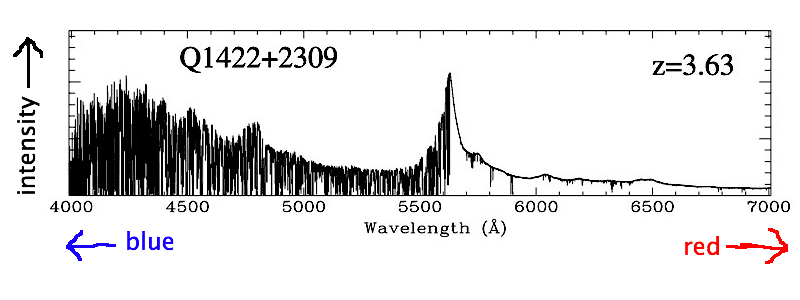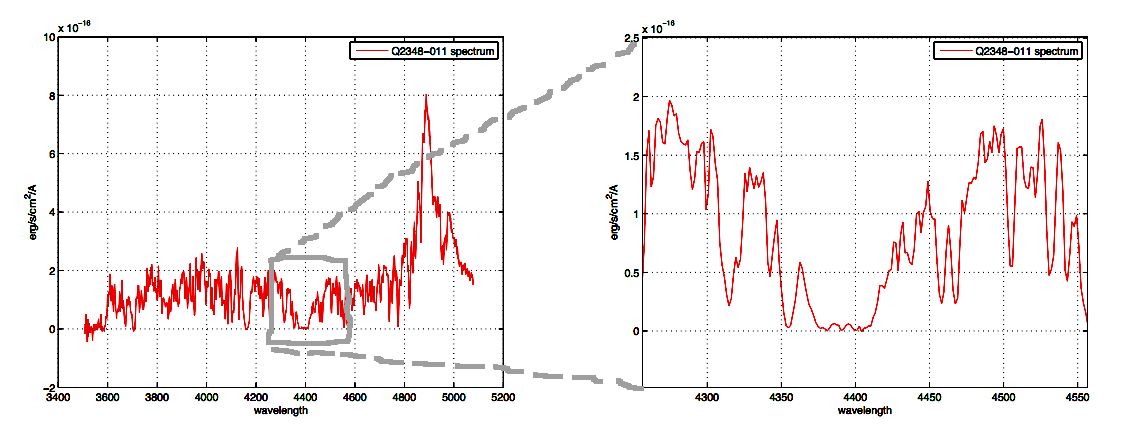Quick explanation
If you look at a spectrum of a very bright and very distant light source (usually a quasar), you'll see a lot of "noise", or absorption lines, caused by all the gas clouds lying in between the light source and us. These lines are called the Lyman α forest.
If the line of sight pierces an extra large gas cloud — the seed of a galaxy — an extra strong absorption line will arise; this is called a damped Lyman α absorber.
This article is a stub.
The encyclopedia is being re-constructed; until I fix it, you'll have to
- do with this old and badly formatted version, or
- read one of the articles I did re-format (the ones on the front page with colored icons), or
- Make me finish it.
The Lyman α forest
When light travels trough the Universe, it gets redshifted. Light that is originally more blue than the wavelength of Lyα, will eventually be redshifted enough to be Lyα. If this happens in a place in the Universe where there happens to be a cloud of neutral hydrogen, some of the light of the original spectrum (e.g. a bright quasar) will be absorbed, and the spectrum will have an absorption line. Since the Universe is full of hydrogen clouds, the spectrum on the blue side of the originally emitted Lyα line may have many absorption lines, and we call it the "Lyα forest" (if the source is very distant, the light can be completely gone, in which case we call it a "Gunn-Peterson trough"). In this way it is possible to map the structure of the intergalactic medium along the line of sight to the background source.
Damped Lyα absorbers
Sometimes the light will encounter an extremely huge cloud of hydrogen. If the
column density NHI is larger than 2×1020 cm-2
(this roughly means if the beam of light encounters more than 12 million atoms on
its way through the cloud), then the absorption line becomes so broad that you begin to see the
so-called "damping wings" of the line (more absorption far from the center of the line), and hence
this is called a damped Lyα absorber (or just DLA). The reason these
are interesting is that such massive amount of neutral hydrogen is able to cool sufficiently to
make stars, and hence we think that these clouds are the progenitors of present-day galaxies.
And galaxies are so fantastic that we would like to know all about them.
If DLAs are really galaxies in their infancy, then in principle it should be possible to detect
the light from the first stars. The problem is that the light from the background source usually
is so bright that it is hard to see anything else. However, a handful of DLAs has been found where
there is a small emission peak in the bottom of the trough. In fact
Giorgos,
Christa,
Johan, and
I think we have found one of these (see the picture on the left and judge by yourself).
This is emission of Lyα, which is what is expected from star-forming
regions.




